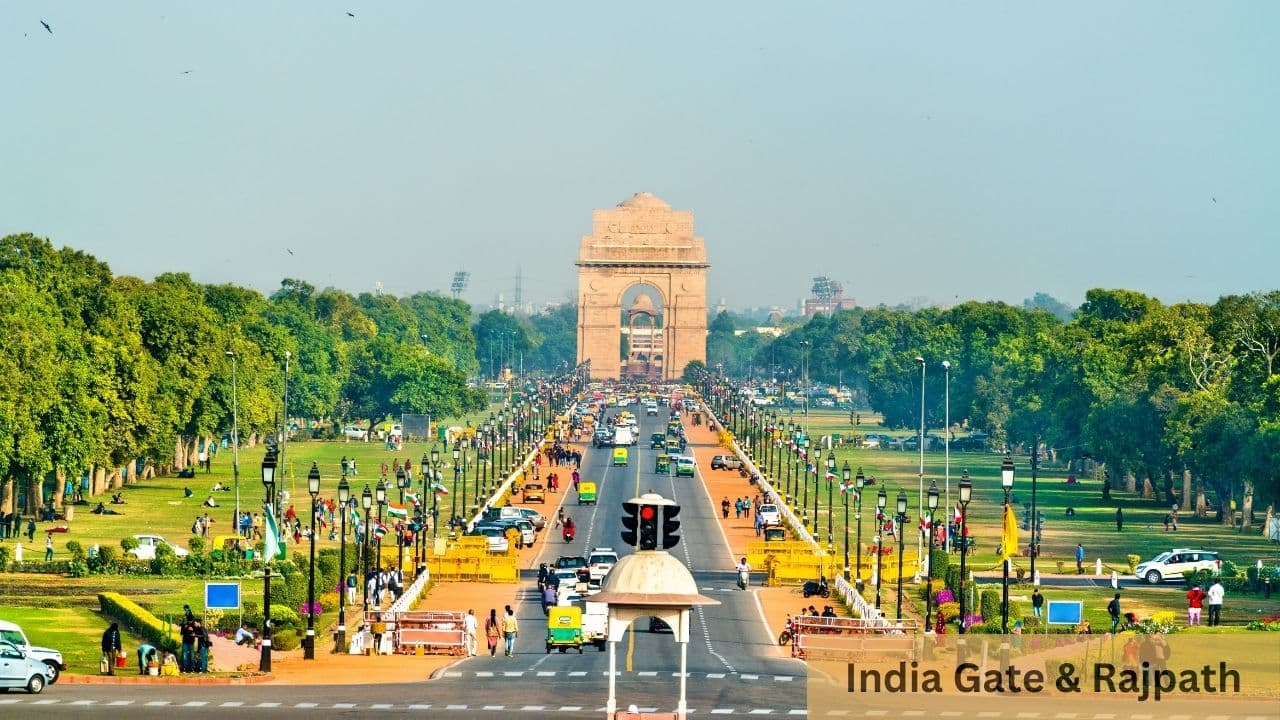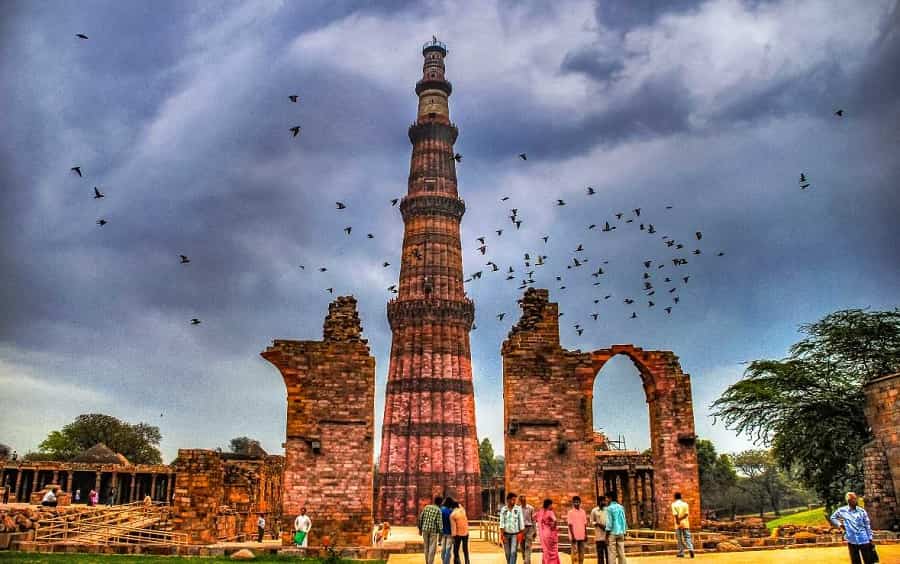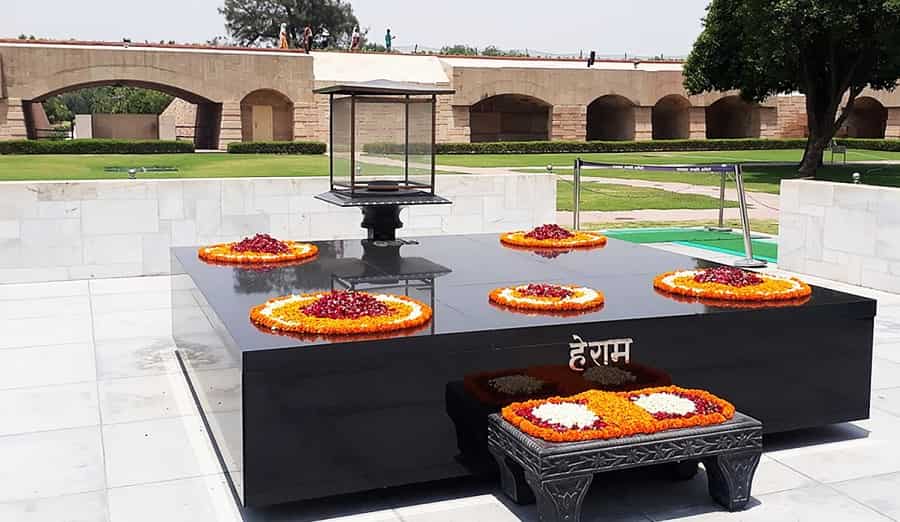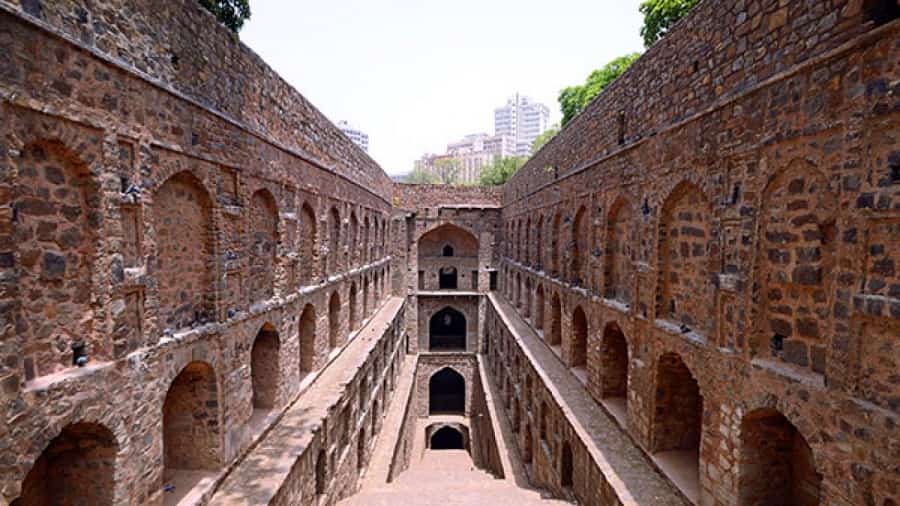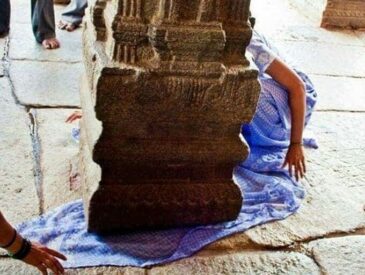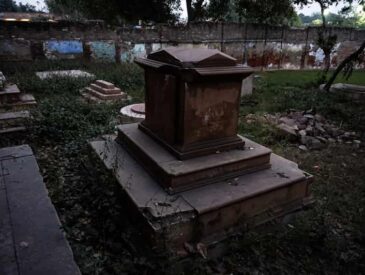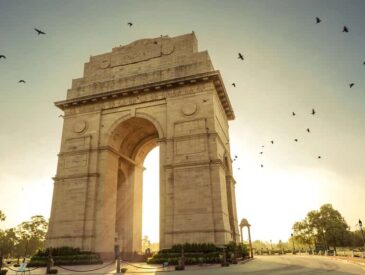Delhi, which has been the eminent seat of power in India for centuries, has seen a myriad of cultures, religions and traditions influence the great monuments and structures it is home to. The capital city is dotted with temples, mosques, buildings and monuments that date back centuries and are still standing strong today. Here are 10 historical monuments and places that you absolutely have to visit when you’re in Delhi.
Unless you plan to visit only one of these in a day (which we doubt you will), travelling by public transport or cabs is going to be very time consuming and expensive. Take your own car and you will definitely spend more time stuck in traffic and trying to park instead of exploring these places. The most convenient option would be to travel by bike; If you don’t happen to own one, you can rent the bike of your choice at very affordable rates from thedelhitours.com.
1- Red Fort
- Constructed between 1638 and 1648 by Mughal Emperor Shah Jahan.
- Known for its stunning red sandstone architecture.
- Served as the main residence of Mughal emperors for nearly 200 years.
- UNESCO World Heritage Site and a symbol of India’s independence.
The Red Fort (or Lal Kila) was built in 1638 and served as the home for Mughal Emperors for nearly 200 years. Later it was converted into barracks for the British Colonial Army. The massive fortress is now a World Heritage Site and is used as the backdrop for large scale national events like the Republic Day and Independence Day.
2- India Gate
- Designed by Sir Edwin Lutyens and inaugurated in 1921.
- A war memorial honoring Indian soldiers who died in World War I.
- Features the names of over 13,000 soldiers inscribed on its walls.
- Popular gathering spot and site for national celebrations.
India Gate (earlier known as the All India War Memorial) constructed in 1931 as a war memorial to honour the 70,000+ soldiers who sacrificed their lives during WWI and the Afghan War. It now stands at the end of Rajpath as a symbol of pride, bravery and patriotism. In 1971, following the Bangaladesh Liberation War, a small simple structure, consisting of a black marble, with reversed rifle, capped by a war helmet, bounded by four eternal flames, was built beneath the soaring Memorial Archway. This structure, called Amar Jawan Jyoti, or the Flame of the Immortal Soldier, has served as India’s Tomb of the Unknown Soldier.
3- Qutab Minar
- Built in 1193, it stands at 73 meters, making it the tallest brick minaret in the world.
- Constructed by Qutb al-Din Aibak as a victory tower.
- Features intricate carvings and inscriptions in Arabic.
- Recognized as a UNESCO World Heritage Site for its historical significance.
The tallest tower in India, the Qutab Minar was constructed in 1193 by Qutab-ud-din Aibak to commemorate the victory and the beginning of Mughal era in India. The 73 metre tower, which has been declared a World Heritage Site, has 5 storeys with the first 3 made of red sandstone and the last 2 made of marble and sandstone.India’s first mosque, Quwwat-ul-Islam, is located at the base of the Qutub Minar.. The 7m Iron Pillar in the complex is another marvel. The pillar, which is made entirely of iron, has not rusted or corroded since it was placed in the its current location in the year 1233 (it is believed to have been made in the year 402) and as such, it has been called “a testament to the skill of ancient Indian blacksmiths”.
4- Humayun’s Tomb
- Built in 1565 as a mausoleum for Mughal Emperor Humayun.
- The first garden tomb on the Indian subcontinent, showcasing Mughal architecture.
- Surrounded by beautiful gardens, reflecting Persian influence.
- Design influenced the later construction of the Taj Mahal; a UNESCO World Heritage Site.
Built in 1570 by Queen Haji Begum (Humayun’s widow), the impressive monument displayed an inspiration of Persian architecture during the early Mughal rule in India. The famous Taj Mahal bears a certain resemblance to this structure. Humayun’s tomb also happens to be the place from where the last Mughal Emperor Bahadur Shah Jafar was captured by the British in 1857.
5- Raj Ghat
- A simple black marble platform commemorating Mahatma Gandhi.
- Located on the banks of the Yamuna River in Delhi.
- Marks the site where Gandhi was cremated in 1948.
- A serene place for reflection and remembrance, often visited by dignitaries.
Delhi is also home to Raj Ghat which serves as the resting place for many of India’s greatest heroes. The most important perhaps is the black marble platform marking the spot where Mahatma Gandhi, the Father of the Nation, was cremated after his assassination in 1948.There are two museums nearby that honor the memorials of Gandhiji, Rajiv Gandhi (Veera Bhoomi), Indira Gandhi (Shakti Sthal), Jawaharlal Nehru (Shanti Vana), and Lal Bahadur Shastri (Vijay Ghat).
6- Bijay Mandal
- A historical site from the 14th century, associated with the Tughlaq dynasty.
- Features the ruins of a fort and a mosque, showcasing Indo-Islamic architecture.
- Offers a glimpse into medieval Delhi’s historical landscape.
- A lesser-known gem, often overlooked by tourists.
Bijay Mandal once served as the palace of the eccentric ruler Mohammad Bin Tughlaq in his city of Jahanpanah (the fourth medieval city of Delhi). The once mighty structure which boasted of a thousand pillars and an octagonal pavillion that offered a spectacular view of the city now lies in ruins. 3 other important structures – Adilabad, Begampur Mosque and the Serai Shaji Mahal all lie in close vicinity to Bijay Mandal.
7- Jantar Mantar
- Constructed in 1724 by Maharaja Jai Singh II as an astronomical observatory.
- Contains a collection of architectural astronomical instruments.
- Designed to observe celestial bodies and measure time accurately.
- A UNESCO World Heritage Site, reflecting India’s scientific heritage.
The Jantar Mantar is an ancient observatory that was built by Maharaja Jaisingh II of Udaipur in 1724. It consists of 13 architectural astronomy instruments that were used to compile astronomical tables, and to predict the times and movements of the sun, moon and planets. These structures, while architecturally fascinating, have lost their purpose because of the high-rise buildings around them.
8- Hauz Khas Complex
- A historical site that dates back to the 13th century, originally a water tank.
- Features a mosque, tombs, and ruins set around a picturesque lake.
- A vibrant cultural hub, known for cafes, boutiques, and art galleries.
- Combines history with modern urban life, attracting many visitors.
The Hauz Khas Complex in south Delhi houses a water tank, an Islamic seminary, a mosque, a tomb and pavilions built around an urbanized village with medieval history traced to the 13th century of Delhi Sultanate reign. The name Hauz Khas means ‘Royal Tank’ in Farsi. This area has transformed into one of the most popular hangout spots for the youth of Delhi as it is surrounded by numerous quirky places to eat as well as a posh shopping district.
9- Agrasen ki Baoli
- A stepwell built in the 14th century, later renovated in the 16th century.
- Notable for its architectural beauty and intricate carvings.
- Historically used for water storage, providing a respite from the heat.
- A popular cultural site and photography spot in modern Delhi.
Agrasen ki Baoli (The well of Agrasen) features some truly mesmerising architecture and is recognised as a protected monument by the Archeological Survey of India. It consists of a 103 steps and the visible part of this monument consists of 3 levels which are lined with arched niches on either side. Agrasen ki Baoli lies near the famous Connaught Place and Jantar Mahal and is rumoured to be haunted with a number of mysterious stories that add to the lore of this place.
10- Lodi Gardens
- Established in 1936, featuring tombs from the Lodi dynasty (15th century).
- A lush urban park that serves as a green oasis in the city.
- Popular for jogging, picnicking, and leisurely walks among historical monuments.
- Home to diverse flora and fauna, making it a favorite among nature lovers.
Arguably the most serene and relaxing places in Delhi, Lodi Gardens is a 90 acre space covered with greenery that flows through several monuments like the Bada Gumbad Mosque, Sheesh Gumbad, Sikandar Tomb and Mohammed Shah Tomb. These gardens are located between Khan Market and Safdarjung’s Tomb on Lodhi Road in the home of Delhi’s oldest dynasty, the Lodhi. One of the nicest spots on campus here is the lake, which is an ideal spot for you to end your visit.
Which one of these places is your favourite or which one are you the most eager to visit? Let us know in the comments below.



